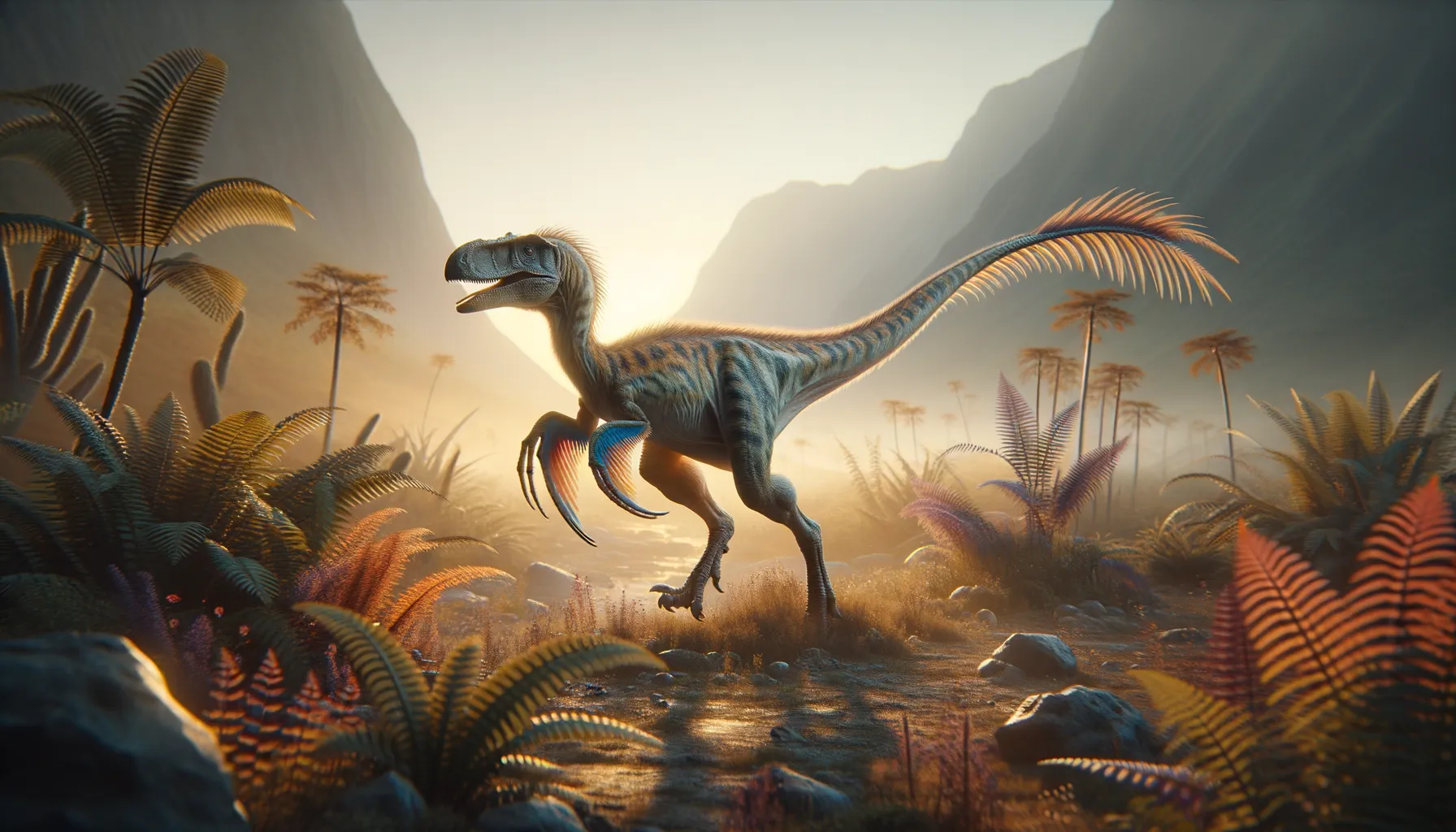
Ingenia
Swift and nimble, thriving in ancient times.
Period
Cretaceous
Length
Roughly 1.5 meters long.
Height
Around 0.5 meters tall.
Weight
Approximately 10 kilograms.
Ingenia was a small, nimble theropod dinosaur that inhabited what is now Asia during the Late Cretaceous period. This oviraptorid was well-adapted to its environment with a lightweight build, making it an agile predator or omnivore. Ingenia is notable for its role in discussions regarding the relationship between dinosaurs and birds, as it shares many anatomical characteristics with modern avian species.
Diet
Ingenia likely had an omnivorous diet, consuming a variety of small animals and possibly plants. It might have eaten eggs, insects, and small vertebrates, taking advantage of whatever food sources were available for its size and speed.
Hunting
Ingenia relied on its speed and agility to catch small prey. Its diet suggests that it might have been opportunistic, taking advantage of available food resources. The sharp beak and clawed hands were probably useful in securing its meals.
Environmental challenges
Ingenia lived in a landscape that was potentially harsh, with periods of aridity and fluctuations in food availability. Predatory threats from larger dinosaurs would have posed significant challenges, requiring the use of speed for evasive maneuvers. Adapting to a variety of food sources might have been critical for survival in such a competitive environment.
Speed
Likely quite fast owing to its lightweight build.
Lifespan
Exact lifespan is not well-established.
First discovery
Discovered in the late 1970s in Mongolia.
Fun Facts
- Ingenia was a small dinosaur, roughly the size of a turkey, but with a much longer tail.
- Ingenia lived during the Late Cretaceous period, around 70 million years ago, in what is now Mongolia.
- The name 'Ingenia' comes from Ingen, a location in Mongolia where its fossils were first discovered.
- Ingenia was an oviraptorid, a group of theropod dinosaurs that were mostly toothless and often mistakenly associated with egg-eating due to their name.
- Despite its small size, Ingenia's remains suggest it had strong, powerful arms which were likely used for capturing prey or digging.
- Ingenia's diet likely consisted of small animals, eggs, or plants, indicating it was probably an omnivore.
- The discovery of Ingenia has helped scientists understand more about the diversity of small theropod dinosaurs in the Cretaceous period.
Growth and Development
Ingenia's growth likely followed a rapid pace to reach maturation quickly, similar to other small theropods. The transition from a hatchling to an adult would have involved significant changes in feeding behavior and social roles. How exactly Ingenia transitioned in its development phases is not fully understood due to the incomplete fossil record.
Habitat
Ingenia lived in what is now Mongolia, in areas that were predominantly arid or semi-arid with seasonal rainfall. This environment would have featured a mix of open spaces and scattered vegetation, providing both challenges and opportunities for an adaptable dinosaur such as Ingenia. Seasonal changes could have influenced its movement patterns and behavior in search for food and safety.
Interaction with other species
Ingenia might have competed for resources with similarly sized small theropods as well as larger herbivorous dinosaurs. Its interactions could have included either avoidance or aggressive encounters. Ingenia's relationship with other species could have been complex, involving both predator-prey dynamics and potential symbiotic associations.
Natural lifespan
The natural lifespan is not clearly known.
Reproduction
Ingenia likely laid eggs in nests, as suggested by its oviraptorid heritage. Parental care might have been present, given the need to protect eggs from both environmental hazards and predators. Reproductive behaviors could have been influenced by seasonal changes, similar to modern birds.
Social behaviour
Ingenia might have exhibited social behavior typical of small theropods, possibly forming loose groups to more effectively find food and evade larger predators. Social interactions could vary seasonally, with periods of solitary behavior when food was limited. Understanding its social dynamics remains speculative due to limited fossil evidence.
Fossil locations
Fossils of Ingenia have been predominantly discovered in Mongolia's Djadokhta Formation. This region is crucial to understanding the ancient ecosystems and has provided insight into the diverse dinosaur fauna of the Late Cretaceous. Other similar formations in Asia might yield further discoveries related to Ingenia.
